| 1 | African rock python |
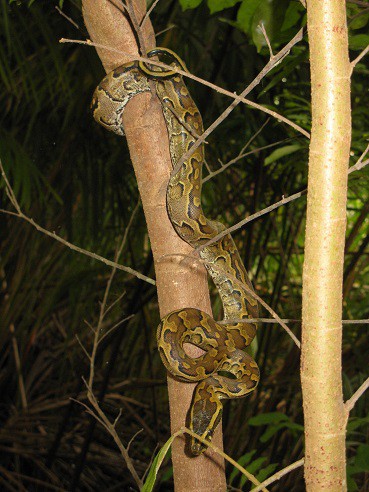
The African rock python is an endlessly powerful snake. They measure 6 metres, can lay 100 eggs, and are able to rugby tackle a 130 pound impala. Their one weakness is moisture. They need at least some, or they’ll grind to a complete halt. African rock pythons are flexible in their habitats and appear in woodlands, villages and savannahs alike.
However, they’re usually found in close proximity to a river or pond. They’re limited, and are always itching to break free. Rainfall is that event – in the hours post downpour, they prowl the African wilds more aggressively than ever. Post hibernation, the first spring rains mark the moment when African rock pythons rev up for the year. Similarly, it’s believed that the installation of water holes across African fields has made them more common than ever.
While you sit watching the evening weather forecast, hearing dire warnings that the rain won’t end until Thursday, the African rock python could be sitting in its burrow, waiting confidently with a smile on its face.
| 2 | Rice paddy snake |
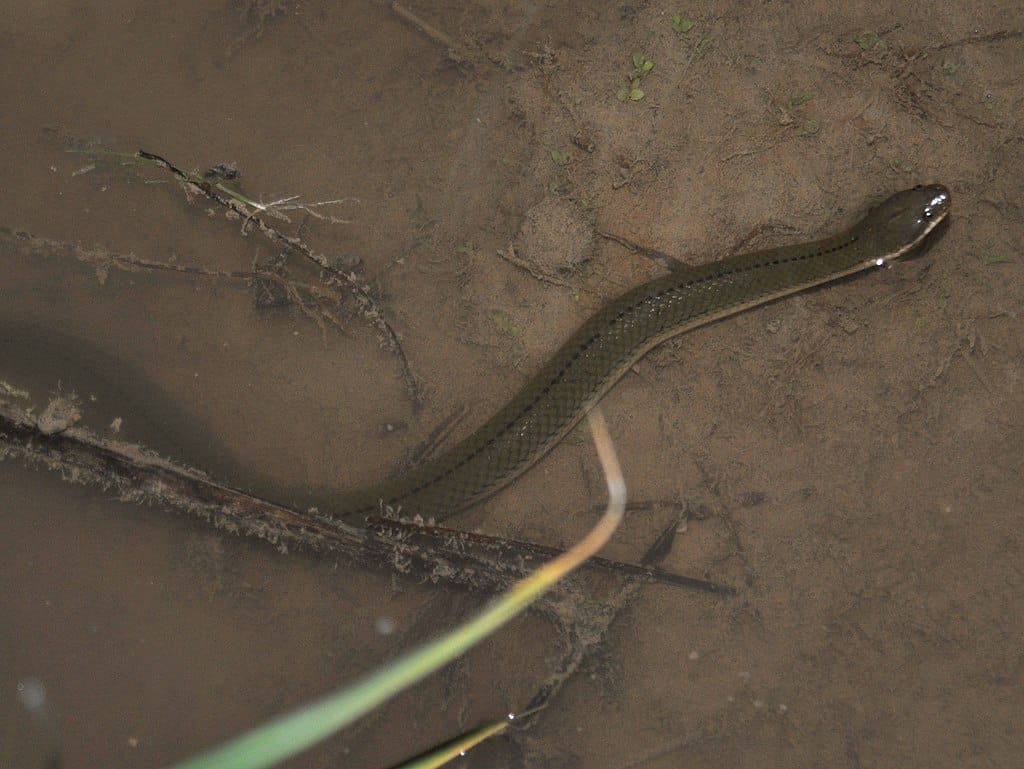
The rice paddy snake is normally a quiet snake, but heavy rains are their calling card, which let them know that the whole world is open for exploration and not just their comfy swamp. Rice paddy snakes inhabit southeast Asia (Thailand, Cambodia), and have a yellow belly with a shiny black back. They mainly eat fish, which they capture by staying perfectly still.
Rice paddy snakes feed in their swamps and sleep in their swamps, but all that changes when the heavens open. Post rain, they can be found in fields, courtyards and schools alike. Even though they eat fish, rice paddy snakes suddenly seek out new horizons, for reasons only known to them. Finding a fresh new swamp might be why, crossing the land while it’s wet and sodden. Rice paddy snakes are mildly venomous, but no threat to humans. This includes during downpours – they don’t suddenly gain superpowers.
If you sit cross-legged on the forest floor, you could witness this process first hand. You’d have to endure several hours of torrential rain, becoming soaked from head to toe. Eventually though, the skies will clear, the air will freshen, and the first rice paddy snake will pop its head out of a swamp. Another 3 will appear, then another 5, and then there’ll be an entire convoy of rice paddy snakes setting off to explore the world.
| 3 | Sunbeam snake |
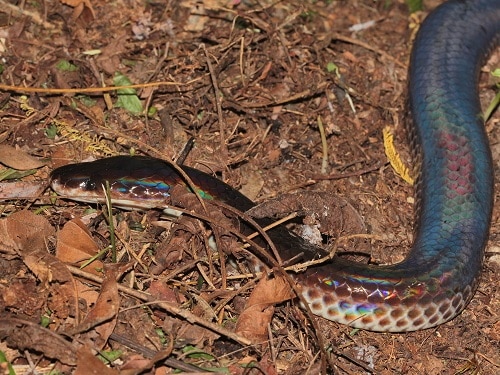
These snakes are like leeches in that they’re normally in hiding, yet all come out at once in the hours post heavy rain. Sunbeam snakes live in Thailand, and are sought after by reptile enthusiasts for their iridescent scales, which reflect every colour of the rainbow. Usually though, they never find them. Sunbeam snakes are common near guava and rice plantations, yet they may still be invisible.
The key is rainfall, as just after heavy rains, sunbeam snakes will come out in force. They’ll suddenly cover every part of the local woods, in a non-threatening way. The sunbeam snake is nothing to fear, as the most they’ll do is wrap two full body coils around your finger and squeeze. They’re non-venomous, and sometimes wiggle their tail so furiously that it makes a vibrating sound without touching anything.
As the rain hammers relentlessly against the forest, the sunbeam snake waits patiently in its hollow log. It sits completely still except for the rise and fall of its belly, staring ahead calmly, waiting for its moment. The occasional drop or spray might find its way in, but the sunbeam snake has a warm, comfortable home where it can weather the storm.
| 4 | Puerto Rican boa |
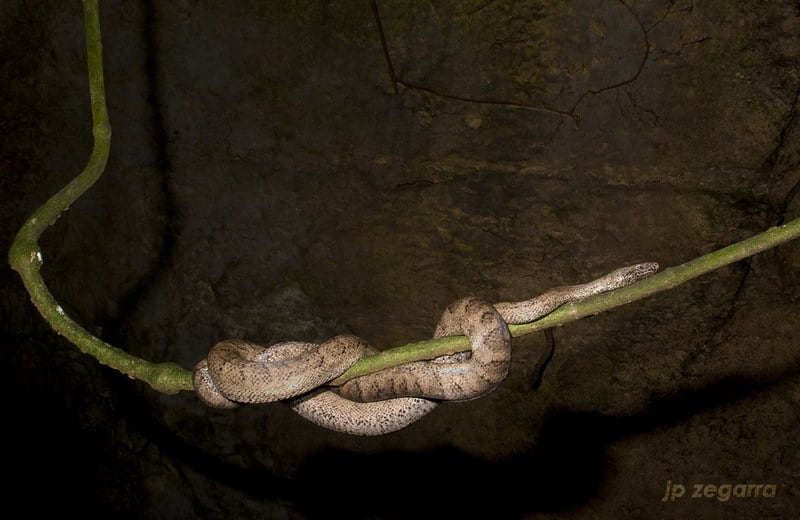
A snake which bides its time, waiting for optimal conditions. It doesn’t waste its time in dry weather, as it knows that its rodent prey will be far less abundant. It uses these gaps to recuperate instead. Puerto Rican boas live solely on their namesake island, and spend time hunting bats in dark, dripping caves. Above ground, they eat black rats and Evermann’s anoles. Reports from the island state that the ultimate time to see this boa is in the hours following a heavy, sustained downpour.
Puerto Rican boas exploit this freshly wet world, moving at a slow yet consistent pace. They use all their skills to exploit this key moment, climbing several metres up trees, and clinging to branches that really should snap. If the forest is dry, then these acrobatics will be less fruitful. Puerto Rican boas are an aggressive species which refuses to calm down even after years in captivity.
Getting caught in a downpour isn’t a joke for a snake. A snake’s scales are weaker than you might think, not like a 12th century suit of armour. In 2022, scientists were examining the mushroom flora of a factory region in Chihuahua, Mexico. They had just avoided a punishing hailstorm, and soon after they found a dead prairie rattlesnake. Its body was covered with brutal lacerations, clearly from the impact of multiple hailstones as powerful as bullets.
| 5 | Purple glossed snake |
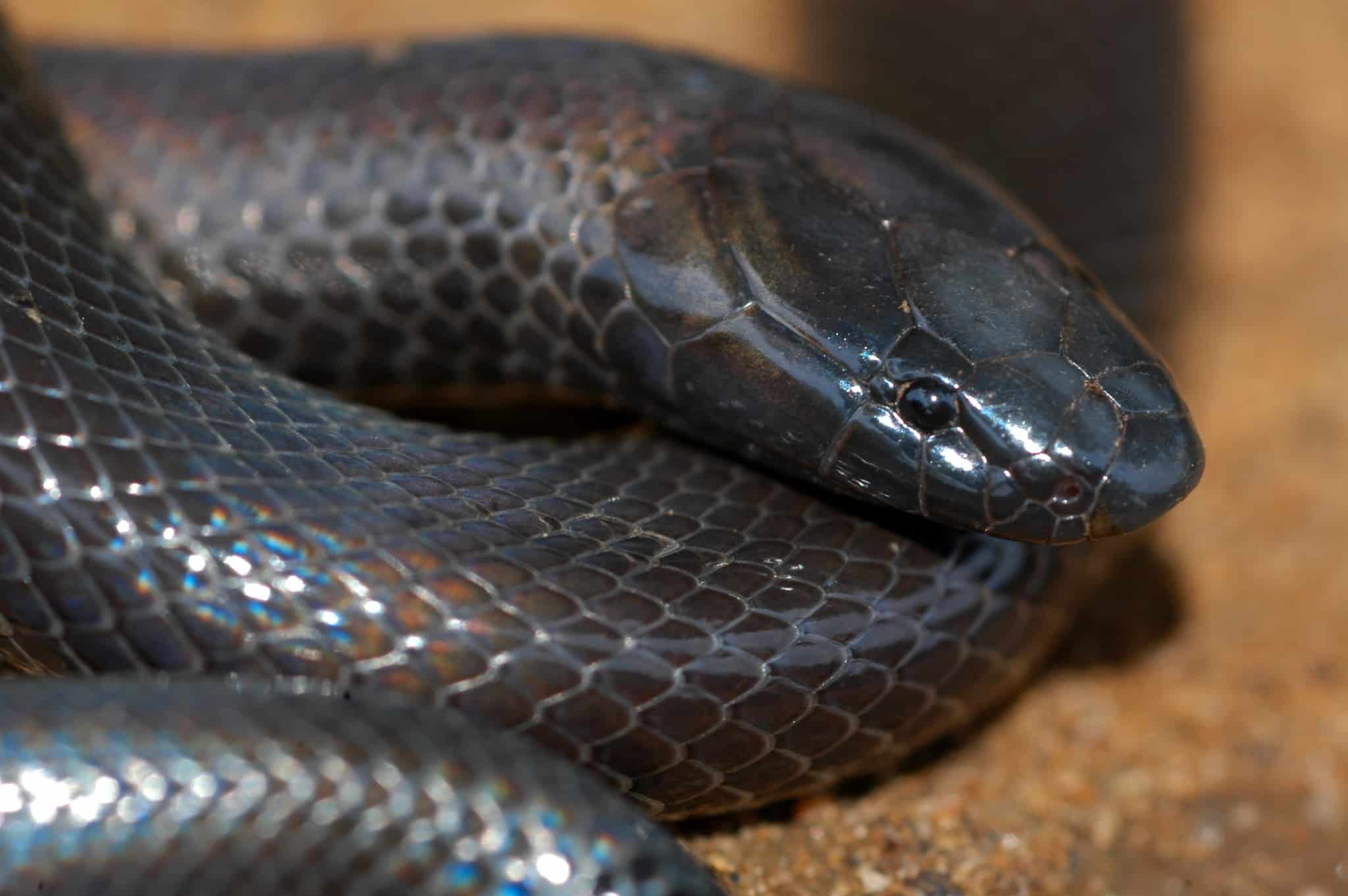
A 50-75cm snake of South Africa and Zimbabwe, which spends 50% of its time underground. This is an unpredictable snake, as one minute they’re plentiful and the next day they’re gone. Rainfall is the secret determiner. For whatever reason, moisture draws this species up to the surface, where they can embark on a quest for lizards, their main prey.
This is a mildly venomous snake, but one which has never caused a human death. They move around slowly and have smooth, shiny scales. Although it might look disturbing when dozens of purple glossed snakes start crawling up from their soil tunnels, there’s no reason to be afraid.
Purple glossed snakes (Amblyodipsas polylepis) may inherently prefer moist conditions, or they might be following more abundant prey. Another reason might be camouflage. Amblyodipsas polylepis has a dark body, which would stand out more clearly against parched earth. After heavy downpours, with water sloshing around everywhere, they’d blend in far better. It’s risky enough for purple glossed snakes to leave cover, as they cannot defend themselves. Their weak venom is targeted against prey, and their temperament isn’t aggressive. They need to minimise risks as much as possible, and a post rain African landscape is superior.
| 6 | Mussurana |
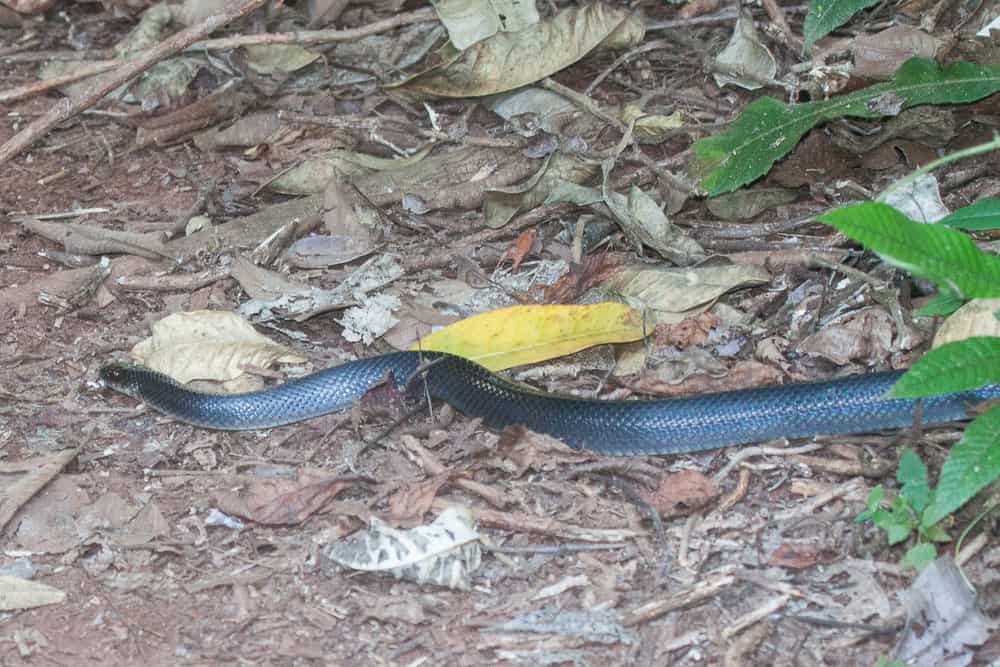
It’s a raging downpour, complete with booming thunder, and leaving the house would be madness. The downpour clears, and now the air is crisp and fresh. The day is suddenly full of opportunity, but now there’s a new horror to contend with: snakes everywhere.
Costa Rica post rainfall is a complete snake pit, and Clelia clelia is one species that likes to get moving. Also called the mussurana, they swallow fellow snakes for their calories, including boa constrictors, black-necked coral snakes, and fer-de-lances. A world post rain is the best time to prey on them as many other snakes have the same idea, being led by their frogs or anoles. Clelia clelia is non-venomous, but will fly into a rage if humans stray too close. It’s rare to find Clelia clelia during sun as well – overcast is most likely.
The forest becomes their playground after rains, a place of infinite possibilities. Yet they have to be careful, as predators higher up the food chain have the same idea. One is the short-faced caiman, a 1.5 meter crocodilian of Amazon rainforest rivers. This species is confirmed to prey on snakes like the emerald tree boa. They normally lurk below the surface like a log, but after downpours, they too become more adventurous, venturing onto dry land amid tangled jungle undergrowth. If Clelia clelia isn’t careful, it might bump right into this crafty caiman, the moment it’s getting excited about the day.
| 7 | Lined snake |
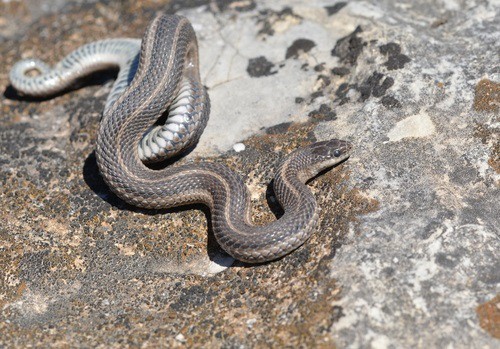
On a dry day, this mid-US snake is virtually nowhere. They’re almost impossible to find in your local grassland, unless you lift up every last embedded rock. Post rain, it’s still extremely hard to find them, yet they’re much more active than usual.
Lined snakes live from Kansas and Nebraska to New Mexico, and live on sweeping plains, commonly with long grasses that make them impossible to see. They’re a burrower which loves to forge dry tunnels in the upper 30cm of soil, which they can navigate to complete their quest for earthworms, their main prey. The difference with heavy rain is that this brings worms to the surface instead, and the lined snake follows.
The top place to spot a lined snake is on roads right next to their grassy plains (sometimes as roadkill). In New Mexico, they’ve been found at high altitudes of 2810 metres. Lined snakes are closely related to garter snakes, yet belong to their own family: Tropidoclonium. Any reptile enthusiast cursing his long failure to find a lined snake should time his expedition, and head to his local grassy plains the day after an apocalyptic downpour.
| 8 | Stiletto snake |
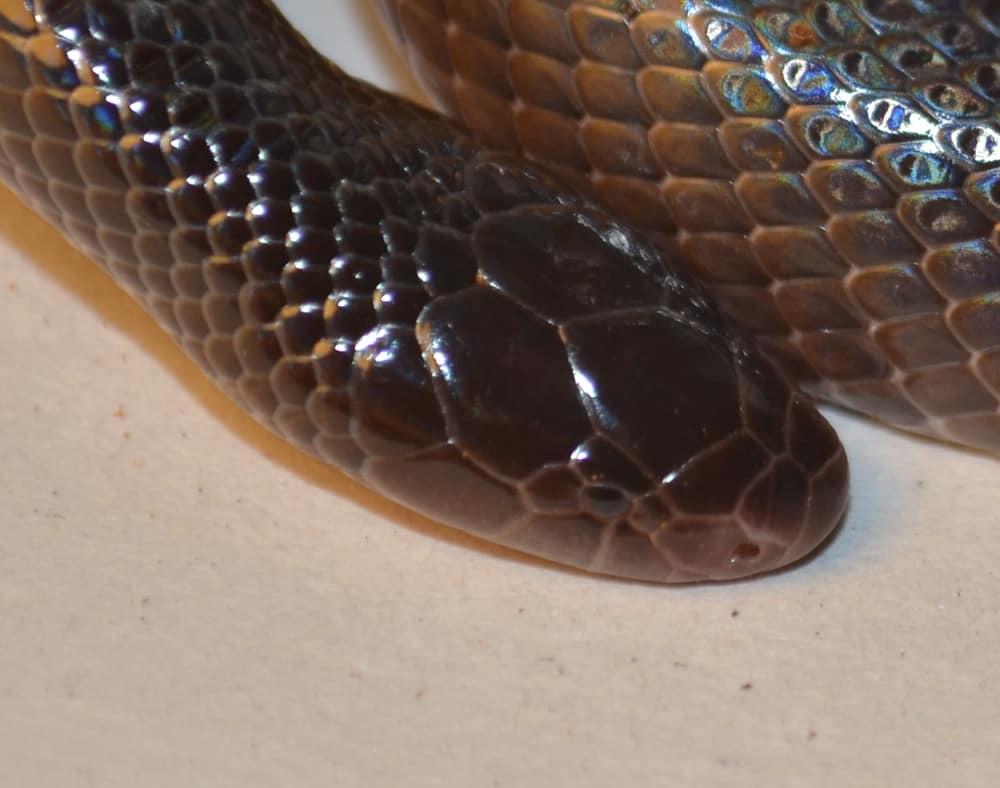
A darkening sky is this snake’s favourite sight in the world. They can’t read a weather forecast, but they know exactly what strengthening winds, thickening clouds and rising humidity mean. They know that once the downpour has passed, they’ll be free to leave their underground hideyholes and explore South Africa’s countryside.
The stiletto snake is one of South Africa’s most dangerous species. They closely resemble the humble black thread snake, being black and shiny like they’ve just been polished. Yet they have a necrotic venom, which they use without a second thought. Stiletto snakes rank highly in South Africa’s annual snakebite statistics, and have the nickname of side stabbing snake. They occupy a variety of habitats, so the best solution is to be cautious of black, shiny snakes immediately after downpours. Summer is their most active period in South Africa, and early evening their favourite time of the day.
A stiletto snake bite can make your finger as grey and gruesome as a frostbitten limb about to drop off. Losing a finger is common, and no specific antivenom exists. A sharply spiked tail is one way to distinguish a stiletto snake from its black, shiny neighbours. They also tend to arch their neck upwards when threatened, with their head facing down, as though trying to dig to safety.
| 9 | Tiger rattlesnake |
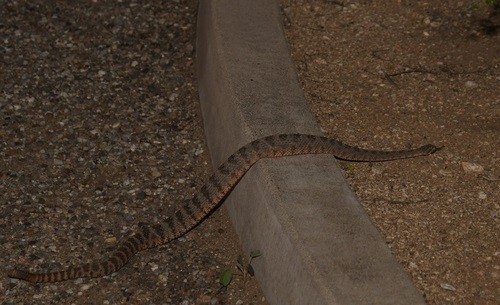
Tiger rattlesnakes are desert dwellers, which lurk among cacti and dry rocks, sometimes right next to interstate highways in Arizona. They live in deserts with a sweeping view of the distant mountains, and possess the most neurotoxic venom of any rattlesnake. Weirdly, their venom also contains the least individual toxins of any rattlesnake.
In 1998, Arizona received record-breaking rainfall, due to a strong El Nino in the Pacific ocean, a phenomenon of ocean currents. Scientists noticed something strange in the desert: that the tiger rattlesnakes were way more active. The species normally moves 30 metres daily, but now they were buzzing with energy. The males were particularly hyper, and in 1999, something magical happened: a particularly high number of females gave birth. The plot thickened. Somehow, rainfall makes male tiger rattlesnakes more interested in females.
There were two theories: 1) that rodents were more plentiful, giving them energy reserves, or 2) that they inherently prefer more moisture. They gained energy, but luckily not so much that they slithered all the way to Tucson. In fact, tiger rattlesnakes are loyal to one particular desert hole for years.
| 10 | Red spitting cobra |
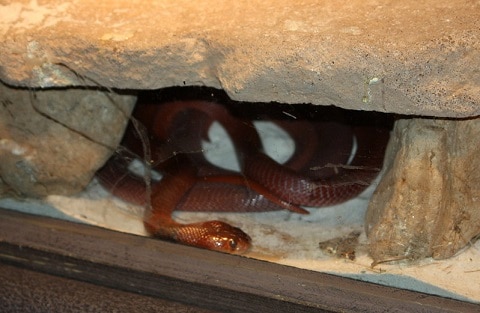
The red spitting cobra is a dangerously venomous, 140cm species of Ethiopia and Kenya. Surveys show that they’re most active from October, which coincidentally or not, is also the start of the Kenyan rainy season. Rainy season is the time when a local Kenyan is at high risk of having venom spat in their eyes, or even worse, receiving a bite. Red spitting cobras can spit accurately at 2.5 metres, and prefer open areas like savannahs, avoiding dense forests. They also appear on rock formations, as Steve Irwin discovered in a 2000 clip.
Red spitting cobras are flexible, but gravitate towards frogs for their prey. Coming out after heavy rains might be the cobra’s innate preference, but it’s also a response to high availability of prey. Frogs become more adventurous after rains when puddles cover every surface, and streams suddenly form where the savannah was once parched. It gives them corridors of moistness away from their usual rivers, and the land suddenly becomes a hotbed of hopping and chirping.
Red spitting cobras come out for logical reasons: because it’s more economical to search for prey when there’s tons of them around.

Show photos of black snakes.with small amounts of red indigenous to south Alabama
Talking about the mud snake? Definitely the 11th entrant on the list if you are.